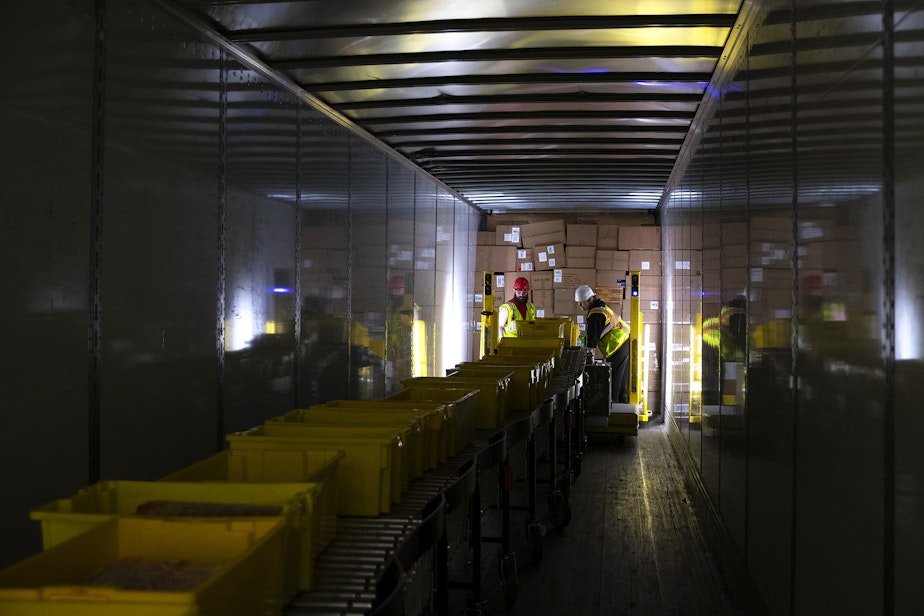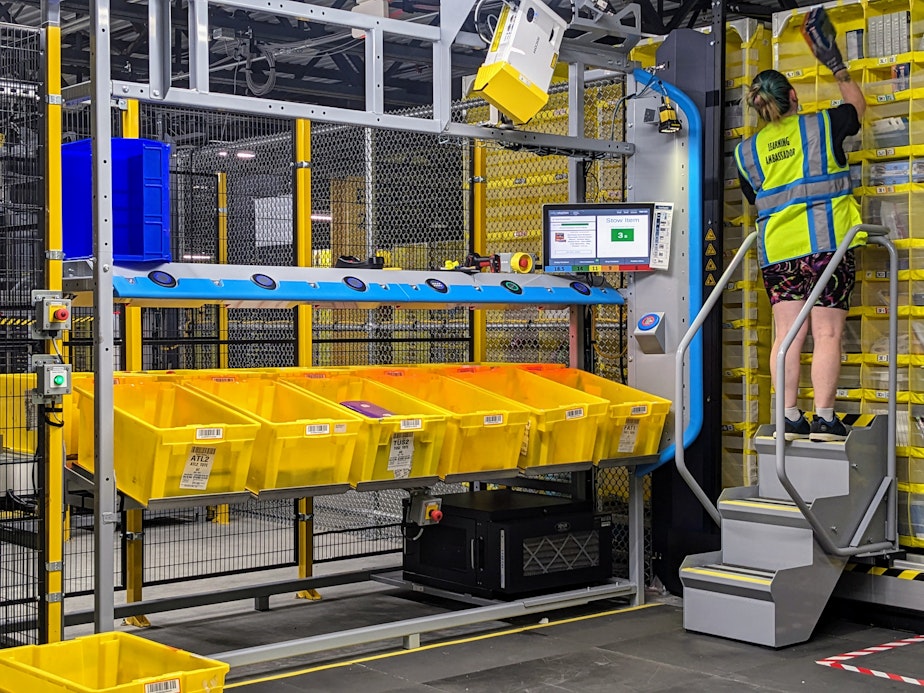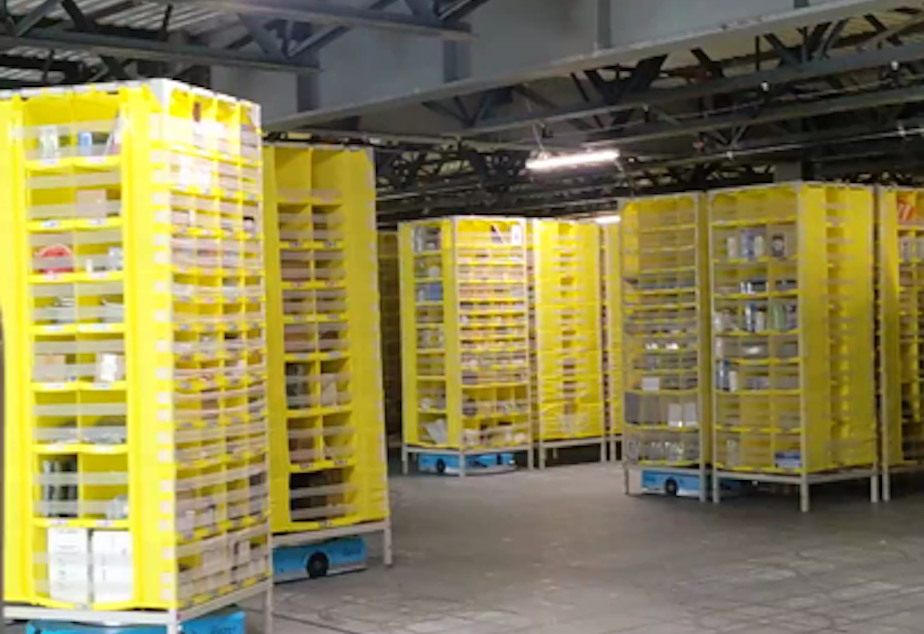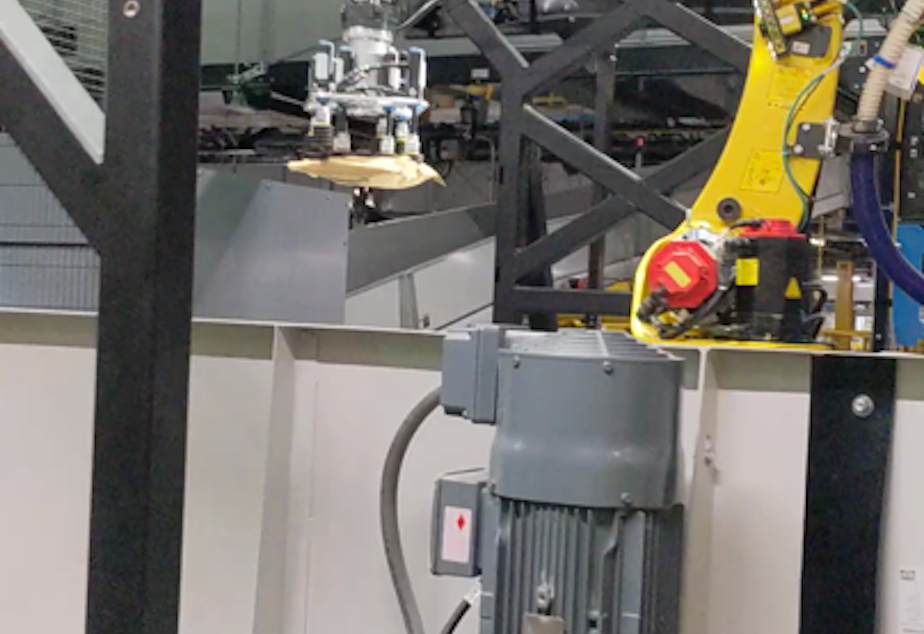A tale of two Amazon warehouses: How a workplace safety lawsuit could accelerate automation

Amazon employees chat as they unload a wall of boxes from a trailer into yellow tote bins at the company’s flagship fulfillment center in Kent, Washington. They’re among thousands who work behind the scenes to deliver packages to our doorsteps in days, or even hours, as if by magic. But safety regulators in Amazon’s home state say that magic comes at too high a cost.
The Kent warehouse is one of several in Washington fined by the Department of Labor and Industries for “knowingly putting workers at risk of injury.” Regulators say tasks like manually unloading trailers are hazardous for employees.
“This is the most manual part of our process in our fulfillment center,” said Julius Yu, general manager of the Kent warehouse, during a tour. “We don't have any fancy robots that can go in and unload yet. We do rely on human labor for this.”
But at an Amazon warehouse 57 miles to the north in Arlington, fancy robots are already on the job. Amazon opened the fulfillment center, called PAE2, last month, showing off brand-new robotics that automate some of the tasks state safety regulators are worried about.

Sponsored
Amazon appealed the citations to the Board of Industrial Insurance Appeals, which handles disputes like this, in a trial that’s winding down this week. Amazon is hoping the board will overturn the claim that it willfully puts workers at risk, while the state is seeking safety reforms at the company’s warehouses.
The two warehouses represent Amazon’s past and future as it works to maintain miraculous shipping speeds while skirting oversight from state and federal safety officials. Amazon is betting on robotics to improve safety, without sacrificing efficiency, inside its warehouses. If safety officials are successful, it could push Amazon to accelerate its robotics program. The impact that will have on workers remains an open question.
At PAE2, robots that resemble bumper cars drive shelves full of products to workers’ stations. Software dictates where those products go on the shelf, with lighter items higher up. Employees are encouraged to use a step rather than lifting above their heads, and a computer reminds them to stretch and take breaks.

 6 secs
Robots drive shelves full of Amazon products to workers' stations at the company's Arlington plant.
6 secs
Robots drive shelves full of Amazon products to workers' stations at the company's Arlington plant.
“As we’ve stated throughout the trial, many of the things the state claims would improve ergonomics are already in place, including height adjustable workstations, weight filters that direct certain items to shelves within an employee’s power zone, and a process for tagging and fixing broken equipment,” said Maureen Lynch Vogel, an Amazon spokesperson.
Sponsored
In another part of the warehouse, a robotic arm called Robin lifts boxes off of a conveyer belt and sorts them, a task that used to be done by an employee.
“If you have a Robin doing it, you don't have to have an associate do it,” said PAE2 General Manager Bruno Arnal when asked how the robots make things safer.

 16 secs
The Robin is a robotic arm that lifts and sorts packages, a task previously done by Amazon workers.
16 secs
The Robin is a robotic arm that lifts and sorts packages, a task previously done by Amazon workers.
Fewer jobs or fewer injuries?
Automation can eliminate difficult or dangerous tasks. It’s something state safety officials recommended Amazon do more of. But automation can also eliminate jobs. Arnal wouldn't say how many jobs robots like Robin could displace. Instead, he said the shift to robotics will open up other opportunities for employees.
Sponsored
Washington state safety officials recommend Amazon automate more tasks in its warehouses. A report commissioned by the Department of Labor and Industries includes a number of processes that inspectors say could be safer if partially automated.
“Perhaps more than any other company, Amazon has the means and the know-how to invest in solutions that keep their workers safe,” Craig Blackwood, assistant director for L&I’s Division of Occupational Safety and Health, said in a statement.
Federal safety officials also have their eye on Amazon warehouses. An OSHA investigation at six facilities found workers are at risk due to frequent lifting of heavy items, awkward twisting and bending, and long hours.
The pace of work
Ultimately the debate over workplace safety at Amazon warehouses comes down to the pace of work. Safety officials and labor leaders, like Eric Frumin, hope the lawsuit will force Amazon to hire more workers to maintain that pace. Frumin is the executive director of The Strategic Organizing Center, a labor group and a vocal critic of Amazon's warehouse practices.
Sponsored
“I think Amazon may well have to hire additional workers to make them safer,” Frumin said. “Right now, they have too many packages for too few workers and they could care less whether that business model creates havoc in the lives of those workers or not.”
Still, Frumin and safety regulators want to see the pace of work at Amazon warehouses slow down. It's a change that's difficult to imagine for Amazon, which built its brand on the ability to deliver products with unbelievable speed. And with customers trained to rely on that speed, the company isn't likely to slow down anytime soon.
Amazon is a financial supporter of KUOW programming. The newsroom operates independently of the business department.




